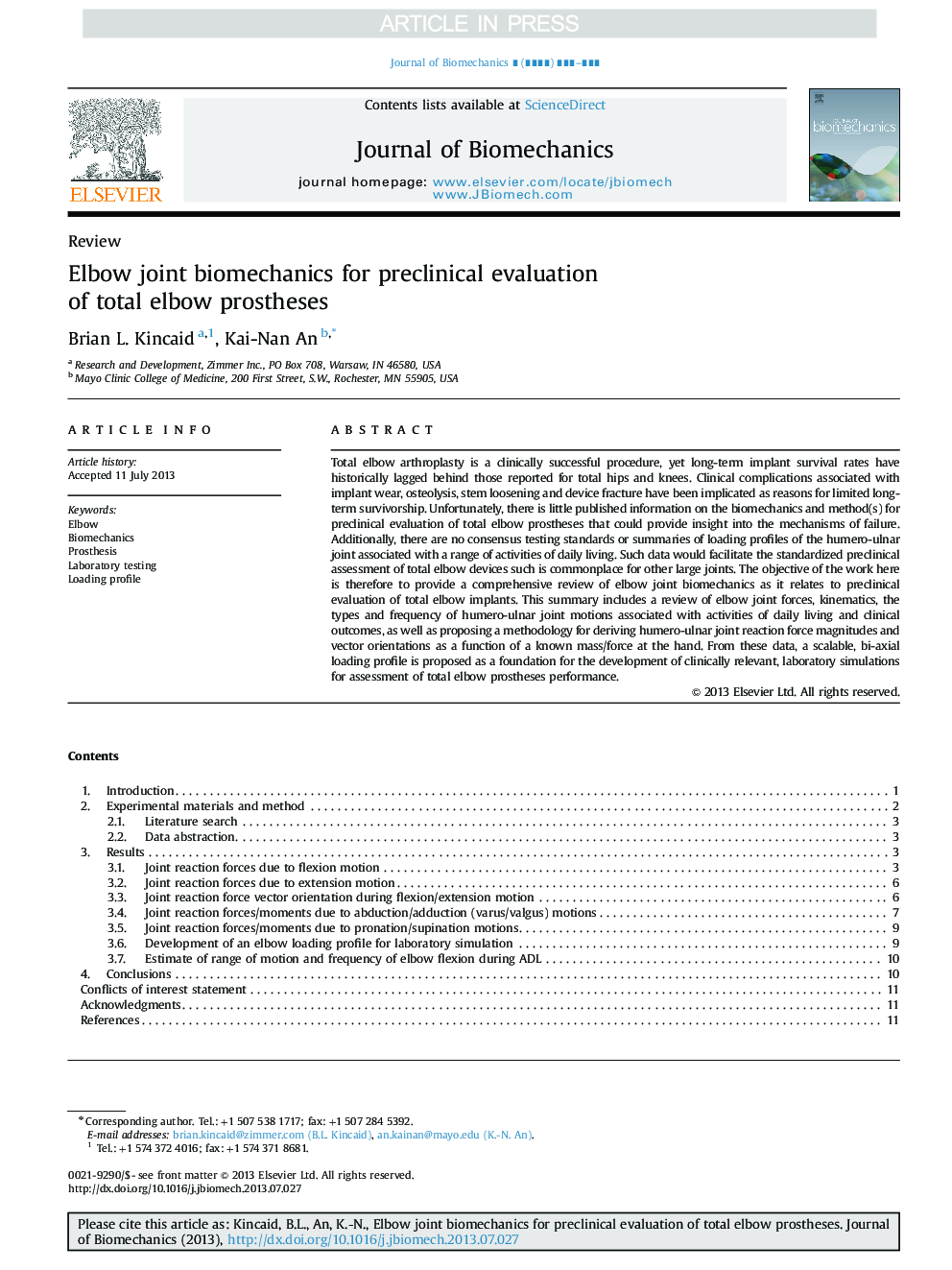| Article ID | Journal | Published Year | Pages | File Type |
|---|---|---|---|---|
| 10432468 | Journal of Biomechanics | 2013 | 11 Pages |
Abstract
Total elbow arthroplasty is a clinically successful procedure, yet long-term implant survival rates have historically lagged behind those reported for total hips and knees. Clinical complications associated with implant wear, osteolysis, stem loosening and device fracture have been implicated as reasons for limited long-term survivorship. Unfortunately, there is little published information on the biomechanics and method(s) for preclinical evaluation of total elbow prostheses that could provide insight into the mechanisms of failure. Additionally, there are no consensus testing standards or summaries of loading profiles of the humero-ulnar joint associated with a range of activities of daily living. Such data would facilitate the standardized preclinical assessment of total elbow devices such is commonplace for other large joints. The objective of the work here is therefore to provide a comprehensive review of elbow joint biomechanics as it relates to preclinical evaluation of total elbow implants. This summary includes a review of elbow joint forces, kinematics, the types and frequency of humero-ulnar joint motions associated with activities of daily living and clinical outcomes, as well as proposing a methodology for deriving humero-ulnar joint reaction force magnitudes and vector orientations as a function of a known mass/force at the hand. From these data, a scalable, bi-axial loading profile is proposed as a foundation for the development of clinically relevant, laboratory simulations for assessment of total elbow prostheses performance.
Related Topics
Physical Sciences and Engineering
Engineering
Biomedical Engineering
Authors
Brian L. Kincaid, Kai-Nan An,
